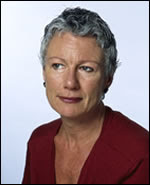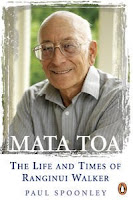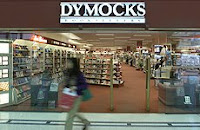 “The Double Rainbow: James K Baxter, Ngati Hau and the Jerusalem Commune”
“The Double Rainbow: James K Baxter, Ngati Hau and the Jerusalem Commune”
John Newton
Victoria University Press - $40
This new title was launched last night at a party at the wonderful Unity Books, Wellington. This was the final stage in a “launch sequence” which began at a hui at Jerusalem over the weekend where the book was presented to the community.
The Bookman’s spy at the event reports that the Wellington shin-dig was hot, crowded, warm, welcoming, diverse, moving and perfect.
Everyone came: representatives of the Baxter whanau, Ngati Hau, Ngati Mokai, the literary community, friends and whanau.
Highlights included Lydia Wevers’ intelligent launch address, Colin Durning’s eloquent mihi, the haka and waiata performed and John’s heartfelt speech acknowledging all the support and aroha he drew on during the book’s gestation.
It was a great night, one which many rated as one of the best launches to be held in Wellington for a long time.
Lydia Wevers has kindly made her address available to The Bookman and it is reprinted here for your interest and enjoyment, I should say that my initial intention was to make some extracts from the speech and reproduce those but the address makes good reading, and is such a valuable commentary on the book that I decided to reproduce it in full even though I would not normally post something as long as this.
"In his introduction John says he was fractionally too young at fifteen to have known Baxter or been part of the commune at Jerusalem, yet it is his book which makes sense of that world to me. I wasn’t too young. I encountered Baxter first as a poet- he was the NZ poet when I came to university in 1968. I loved his richly metaphorical formalist poems, his essays and broadsheets and later Autumn Testament and the Jerusalem Sonnets. He embodied, for me and for many other people, the spirit of the age. Baxter was a frequent presence at Vic, at student meetings, round campus, at class. It was said that when he needed money he rang Frank McKay, our NZ lit lecturer and later Baxter’s biographer, and arranged to teach a class. I remember one 8am lecture when he recited an ode he’d written on the way to class which began with the petrol station at the far end of the Viaduct. Even more excitingly he borrowed my watch-I kept it for years after it stopped working because of that. Soon after he died I was marking first year exam papers, and a number of them were dedicated to Hemi- the emotions of his death marked the end of 1972 in a way that I have never forgotten.
But this book
The Double Rainbow is not a book about Baxter in a biographical or personal way. John calls it a ‘work of cultural history which aspires to be a work of bicultural history’ which is his typically modest way of describing what is a really remarkable achievement. Like the story it tells, this is a book inspired by Baxter but not contained by him.
First I want to say-this is a brave book. In February 1969 Thomas Wallace was chopping firewood when ‘a bare-footed, bearded Pakeha emerged from the mist’. This is how John described Baxter’s first appearance at Jerusalem & though John is not barefoot or bearded it made me think about the courage it takes to really engage with another culture. There are very very few scholars in Aotearoa who have attempted real bicultural work. Lots of people, myself included, have discussed Maori history or literature from a Pakeha point of view. But to try to see from the other side of the river requires courage, openness, and the willingness to actually learn something hard and new. Baxter could do that, and so did some of his followers. Ngati Hau did it and so did the sisters at the convent. And now so has John. I think it's a remarkable achievement.
The second thing I want to say is what a huge amount of work has gone into this book. You can see it in the list of acknowledgements, and its contextual depth. From the ancient eel weirs of the Whanganui to what happened after Baxter died, the book provides a deep and rich slice into a particular place and what has happened there. John has journeyed the length and breadth of Aotearoa, to say nothing of the river, to talk to participants. He has spent months at Jerusalem talking to iwi and to the sisters at the convent. He has read the considerable number of books written about the river, intentional communities, the commune and Baxter- the result is a book that will take its place as a new and adventurous history and also as a cultural analysis that might tell us something about what we should do now. In a way it's a call to action. Part of what is so striking about this story of Baxter and the diverse community that surrounded him is the loving-kindness and generosity that emerged between cultures, between generations, between city and country and between the pa and the Top House. John makes the point that there were many economic and social transactions that took place-gifts of food for gifts of work- but what struck me most was the way that something happened there, suggested also by what happened at Baxter’s tangi, that briefly transcended the fears and anxieties and moral failings that keeps most people living in the circles of their own skulls. What John’s book reveals, in the voices of the people who lived in it and through his own lucid prose, is something bigger than the people who took part in it.
Before
The Double Rainbow the prevailing idea, as John points out and in my own idea of it, was that Jerusalem was Baxter. There’s no doubt that Baxter was visionary and charismatic. But what his vision resulted in was the product of many people-the old ladies at the pa and the Ngati Hau leaders are crucial, as were the sisters at the convent and the remarkable and saintly Father Te Awhitu-there are too many people for me to name and anyway they are in the book. But their collective story is a very powerful one-it is touching and charming but also inspiring-the way the pa educated the influx of city pakeha in tikanga and kaupapa, so they could be part of what happened on the marae. In this book the most remarkable generosity is that of the iwi, as Baxter noted, the tuakana, the older brother, and the response of pakeha to it- open minded to a vision of an alternative world, is what we should all be doing. When I read about how the kuia would march up to the Top House with a bottle of Jeyes fluid and insist they used it, I had to scrub my house from top to bottom.
The last thing I want to say about
The Double Rainbow is that this book is a joy to read. I left myself slightly too little time for it-or so I thought, panicking slightly that it was Saturday morning and I hadn’t started. I needn’t have worried. I know John’s writing- it has flow and light. He sweeps you along. I had time to start on something else by Sunday. But at the same time I felt enlightened and excited by John’s lucid prose and even more importantly, his sense of conviction-this is a book with a commitment to what it describes. And it made me go and reread Baxter.
So I thought, even though this book is a bicultural social history, an ethnography, a work of fact and not a ‘book about Baxter’, I’d give Hemi the last word
This is from Sestina of the River Road, one of his last poems from 1972
I want to go up the river road
Even by starlight or moonlight
Or no light at all, past the Parakino bridge
Past Atene where the tarseal ends
Past Koroniti where the cattle run in a paddock
Past Operiki, the pa that was never taken,
Past Matahiwi, Ranana, till the last step is taken
And I can lie down at the end of the road
Like an old horse in his own paddock
Among the tribe of Te Hau. Then my heart will be light
To be in the place where the hard road ends
And my soul can walk the rainbow bridge
That binds earth to sky. In his cave below the bridge
Where big eels can be taken
With the hinaki, and the ends
Of willow branches trail from the edge of the road
Onto the water, the dark one rises to the light,
The taniwha who guards the tribal paddock
And saves men from drowning.
FOOTNOTE:Like Lydia I am from the generation of New Zealander’s that was captivated by Baxter and his poetry and I remember so well in my Napier bookselling days selling the three slender volumes,
Jerusalem Sonnets, Jerusalem Daybook, and
Autumn Testament by the truckload, all published by Price Milburn I seem to recall.
I am only halfway through
The Double Rainbow but am finding it fascinating, it certainly superbly recalls an important piece of our social history. Great selection too of black & white photographs.
 Penguin poaches Peter Carey to its A-list
Penguin poaches Peter Carey to its A-list Carey was launched on to the Australian literary scene when University of Queensland Press published his first book of short stories, The Fat Man in History, in 1974.
Carey was launched on to the Australian literary scene when University of Queensland Press published his first book of short stories, The Fat Man in History, in 1974.


































